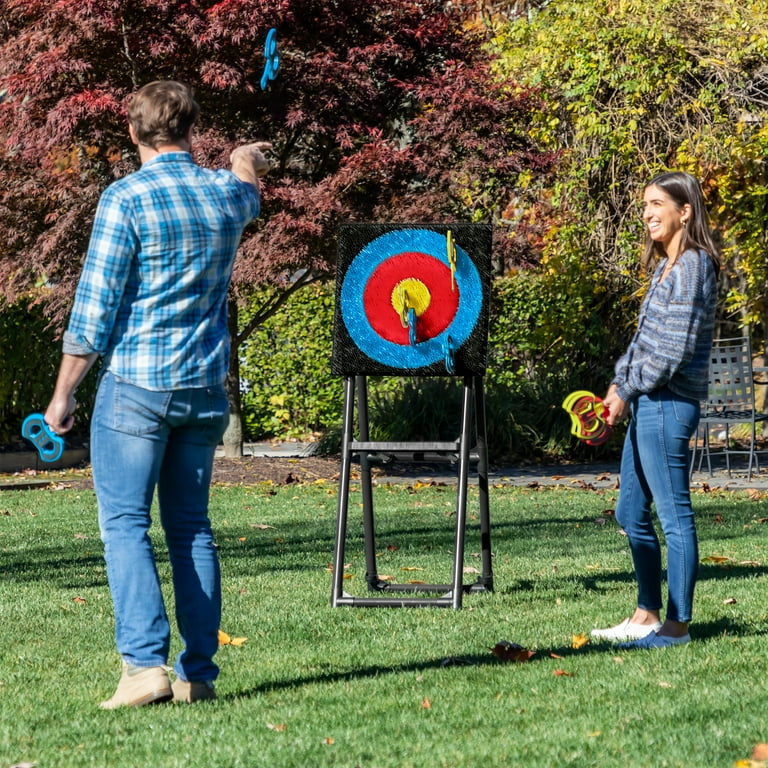The Fun of Axe Throwing: Just How This Sporting Activity Integrates Ability and Adrenaline for a Blast
Axe throwing has emerged as an astounding sporting activity that masterfully intertwines the requirement for specific skill with the thrill of adrenaline, offering individuals a unique and appealing experience. The act of hurling an axe towards a target demands focus and method, all at once promoting an ambience of camaraderie and pleasant rivalry.
The Origins of Axe Throwing
Axe tossing, a recreational activity that has actually acquired significant appeal in current years, traces its origins back to ancient times. The earliest documents of axe usage in affordable contexts are found amongst the Celts and Vikings, who tossed axes for sporting activity as well as in fight training.
Middle ages European warriors, specifically throughout the Middle Ages, practiced axe throwing as part of their martial training. The Francisca, a kind of throwing axe made use of by the Franks, came to be legendary for its fatal precision. This typical tool was made to be tossed at opponent guards and shield, showcasing its twin utility in both sporting activity and fight.
In more current history, axe tossing saw a rebirth in the logging camps of The United States and copyright in the 19th and 20th centuries. Lumberjacks would take part in pleasant competitors, testing their accuracy and toughness by aiming at wooden targets. This advancement from a survival skill to a leisure task has actually paved the method for its modern rebirth, with dedicated locations and organizations currently celebrating the sporting activity globally.
Equipment You Need
Recognizing the abundant background of axe throwing boosts the recognition of the sport's modern-day model. Central to this thrilling activity is the tools, which is important for both safety and efficiency. The primary tool is, of program, the axe. For competitive and recreational axe tossing, one of the most typically utilized type is the hatchet, normally weighing in between 1.25 to 2 extra pounds with a handle length of about 16 inches. The axe should have a sharp, well-kept blade and a manage made from durable wood or composite product, making certain an excellent hold and equilibrium.
Just as important is the target. Regulation targets are built from wood, with softwood selections like ache or cottonwood being chosen for their capability to hold the axe and soak up. The target is normally split into five concentric circles, each with a details point value, to assist in scoring.
Safety and security gear, though frequently ignored, is important. Safety handwear covers can boost grip and stop blisters, while closed-toed shoes are a must to protect feet from dropped axes (denver axe throwing). Finally, a well-lit, roomy tossing location, full with safety and security barriers, guarantees a controlled setting where individuals can concentrate on developing their skills.
Standard Techniques Explained
Understanding the essential methods of axe throwing is important for both safety and security and efficiency. The initial method to understand is the grip. Hold the axe with a company, yet loosened up hold, comparable to holding a golf club. The leading hand must be positioned directly listed below the axe head, while the non-dominant hand supports completion of the manage.
Your dominant foot must be a little forward, aligning with your target. This positioning help in keeping security and guiding power properly towards the target.

Safety And Security First
Making sure security in axe throwing is critical to developing an injury-free and enjoyable experience. A well-designed axe throwing facility features clear demarcations in between tossing lanes, sturdy backgrounds to catch roaming axes, and non-slip flooring to protect against accidents.
Benefits of Axe Throwing
Axe throwing deals a myriad of advantages that expand beyond straightforward recreation. Literally, it gives a full-body exercise, involving muscular tissues in the arms, shoulders, back, and core. The repeated motion of throwing the axe likewise boosts hand-eye coordination and great electric motor skills. For those looking to improve their general health and fitness, axe throwing can function as a dynamic and interesting form of exercise.
Psychologically, axe tossing calls for technique, precision, and emphasis, making it a superb way to sharpen cognitive skills. The focus required to strike the target can work as a kind of mindfulness, permitting individuals to clear their minds and reduce tension. This mental interaction can be particularly useful in helping individuals create better analytic abilities and mental strength.
Socially, axe throwing is typically appreciated in team setups, promoting team-building and friendship. Whether as part of a corporate occasion or a casual outing with pals, the sport urges communication and cooperation. Furthermore, the public experience of finding out and boosting with each other can reinforce connections and develop long-term memories.
Final Thought

The earliest documents of axe use in competitive contexts are found among the Celts and Vikings, that tossed axes for sport as well as in fight training. Launch the axe when your see hands are about at eye degree, allowing the axe's natural turning to direct it towards the target.
A well-designed axe tossing facility attributes clear separations in between tossing lanes, tough backdrops to capture roaming axes, and non-slip floor covering to stop accidents. Individuals must be instructed on the correct means to toss the axe and manage, stressing controlled, purposeful motions over forceful tosses.
In recap, axe tossing stands out as a sporting activity that masterfully integrates precision, skill, and adrenaline.